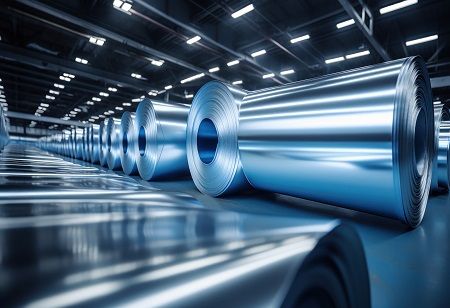
India aims to significantly increase its domestic steel production capacity to 500 million tonnes per annum by 2047 while simultaneously reducing emission intensity, according to officials familiar with the plan.
The country plans to lower emission intensity to 2.25 tonnes of CO2 per tonne of crude steel (2.25 T/tcs) production by FY29, down from the current 2.50 T/tcs, with further reductions targeted by 2047.
These new targets surpass the goals outlined in India's Nationally Determined Contributions (NDCs) for the steel sector. Previously, the average CO2 emission intensity of the Indian steel industry was projected to decrease from 3.1 T/tcs in 2005 to 2.64 T/tcs by 2020 and 2.4 T/tcs by 2030, representing an approximate 1% reduction annually.
Additionally, India aims to increase its steel-making capacity to 500 million tonnes by 2047, up from around 161 million tonnes currently. These plans align with the objectives set forth in the New Steel Policy (NSP), 2017, which aims to achieve 300 million tonnes of steel-making capacity by 2030, requiring substantial investments.
The availability of domestic iron ore is expected to improve from 226 million tonnes to 318 million tonnes by 2047.
Furthermore, the metals and mining sector is anticipated to undergo key reforms to facilitate more exploration, geological surveys, and enhanced data assessment. These objectives are currently being finalized by sectoral groups of secretaries, along with corresponding action items.
To boost mineral availability, increased funding is proposed for the National Mineral Exploration Trust (NMET), with plans to improve expenditure from the fund. Changes in regulations are also being considered to allow surveys in forest areas while maintaining ecological balance. Additionally, hackathons may be organized to analyze geological data being collected.
Officials also noted that vehicle scrapping is expected to remain a minor source of feedstock for steelmaking.
We use cookies to ensure you get the best experience on our website. Read more...